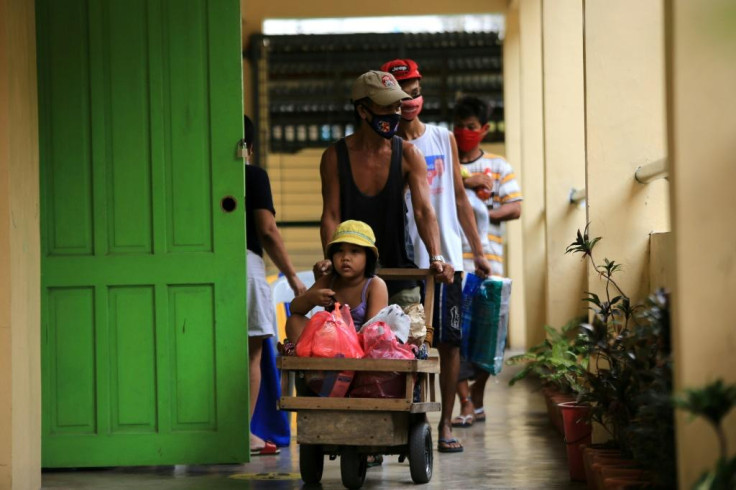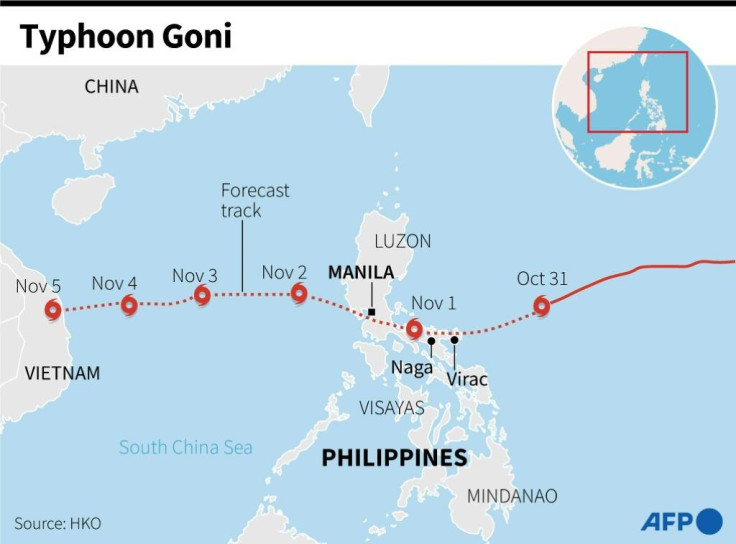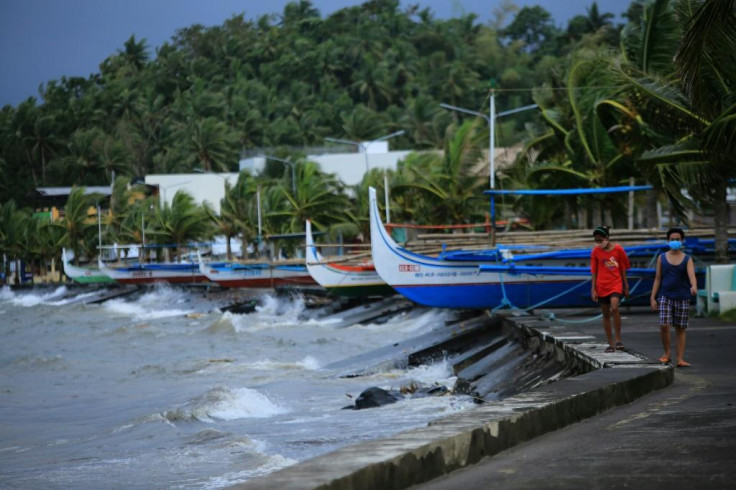Super Typhoon Goni batters Philippines
Goni is expected to weaken as it crosses southern Luzon and enters the South China Sea late Sunday or early Monday.
Super Typhoon Goni pounded the Philippines Sunday with authorities warning of "catastrophic" conditions in the region expected to take the hardest hit, where more than 300,000 have fled their homes.
The strongest typhoon of the year so far made landfall on Catanduanes Island at 4:50 am (2050 GMT Saturday) with maximum sustained wind speeds of 225 kilometres (140 miles) per hour, the state weather forecaster said.
Over the next 12 hours, "catastrophic violent winds and intense to torrential rainfall" would be experienced in the Bicol region, which covers the southern end of the main island of Luzon and Catanduanes, it said.

"This a particularly dangerous situation for these areas."
Goni -- which intensified into a "super" typhoon as it neared the Philippines -- comes a week after Typhoon Molave hit the same region of the natural disaster-prone archipelago.
That storm killed 22 people and flooded low-lying villages and farmland, before crossing the South China Sea to Vietnam.
"The winds are fierce. We can hear the trees being pummelled. It's very strong," Francia Mae Borras, 21, told AFP from her home in the coastal city of Legazpi.

The roofs of two evacuation centres were ripped off by the force of the wind and the occupants moved to the ground floors, Albay provincial public safety chief Cedric Daep told DZBB radio station.
Civil Defense chief Ricardo Jalad said Saturday that "almost a million" people had been evacuated from their homes in the Bicol region.
But spokesman Alexis Naz said Sunday that around 316,000 had fled to safety so far.

"We're seeing toppled trees outside our office. It's really strong. The rain is intense," Naz said.
"Our last contact with our people in Catanduanes was at 3:30 am. They told us the rain and wind were really strong there. And then the system went down."
Up to 31 million people were in Goni's path, authorities said, including in Manila where there are plans to evacuate residents from low-lying slum areas at risk of being inundated by several metre high storm surges.
The capital's airport has been closed.

Loud alarms blared from mobile phones as the National Disaster Risk Reduction and Management Council issued an emergency alert warning of strong winds for Manila and surrounding provinces in the coming hours.
Authorities spent Saturday marshalling rescue vehicles, emergency response teams and relief goods before the storm's arrival.
Flooding and landslides were possible as Goni dumped heavy rain across the already-soaked region, the weather service warned.
Authorities were also monitoring two active volcanoes, Mayon and Taal, for possible volcanic mud flows.
Schools which have been empty since the start of the coronavirus pandemic are being used as emergency shelters as are government-run evacuation centres and gymnasiums.
"Evacuating people is more difficult at this time because of Covid-19," Naz told AFP earlier.
Mary Ann Echague, 23, and her family fled their home in Legazpi on Saturday to an inland primary school where they were sheltering in a classroom with several other families.
"We fear the wrath of the typhoon," said Echague, who was with her two children, parents and siblings. They had carried with them a portable stove, tinned meat, instant noodles, coffee, bread, blankets and pillows.
"Each time we're hit by a typhoon our house gets damaged, since it's made of wood and galvanised iron roofing," she said.
Hundreds of people have been left stranded after the coastguard ordered ferries and fishing boats into port in expectation of rough seas throwing up 16-metre waves.
Goni is expected to weaken as it crosses southern Luzon and enters the South China Sea late Sunday or early Monday as a typhoon, the state forecaster said.
The Philippines is hit by an average of 20 storms and typhoons every year, which typically wipe out harvests, homes and infrastructure, keeping millions of people perennially poor.
Its deadliest on record was Super Typhoon Haiyan, which unleashed giant waves on the central city of Tacloban and left more than 7,300 people dead or missing in 2013.
Copyright AFP. All rights reserved.
This article is copyrighted by International Business Times, the business news leader





















